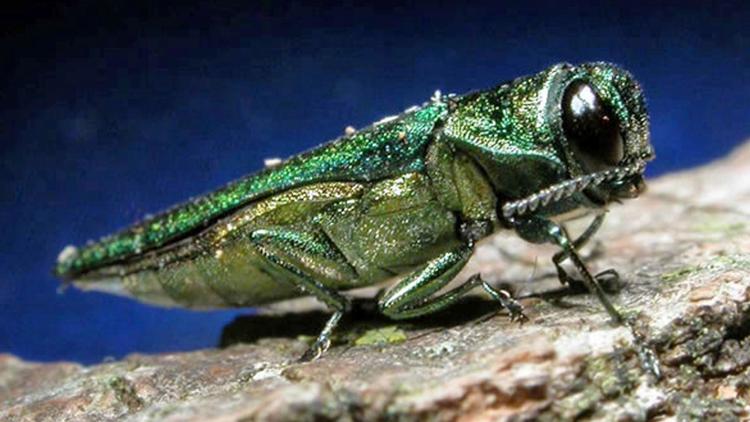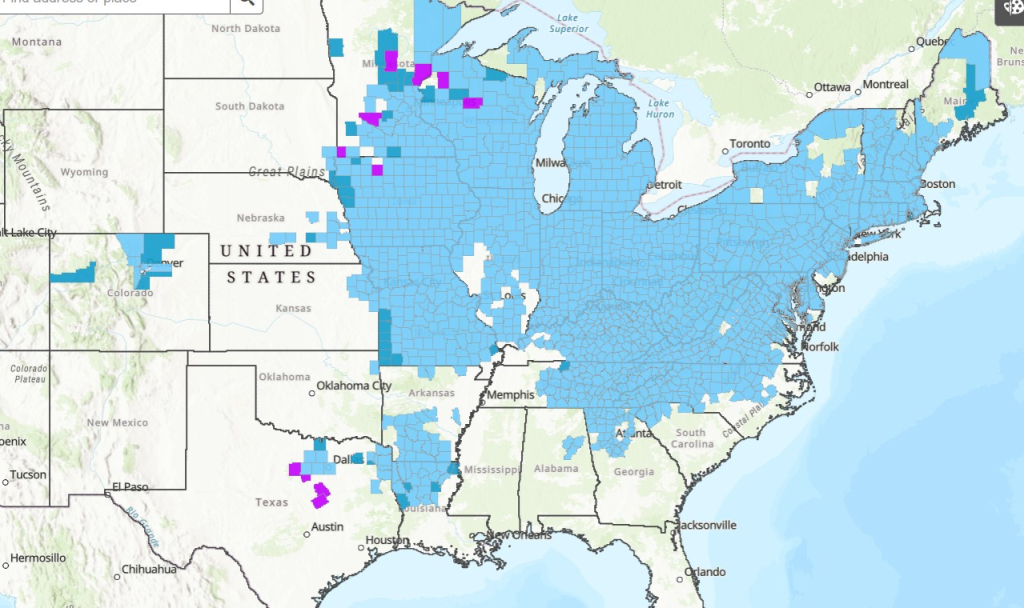
UPDATE 05/15/2024; 1:45 PM: Emerald Ash Borer now found in JOHNSON COUNTY; not yet officially on the list of North Texas counties in which movement of ash wood, leaves, or any of the tree’s materials are banned moving from county to county. Dr. Courtney Blevins, Forester with Texas A&M, warns the state of Texas does not require certification for “arborists” – if hiring an arborist, he strongly suggests visiting www.treesaregood.org for an arborist that receives testing and regular training; in his words “these guys know their stuff”.
The Emerald Ash Borer originally arrived from China on packing material in the Detroit region. It has no known predators in the U.S. as it does in China, so research is being done in hopes of finding an alternative to systemic pesticide treatment. The chemical you are seeking to annihilate these bugs is Imidacloprid. It is available at garden centers in products such as Bayer Tree and Shrub products. Blevins says the sure cure is what a certified arborist uses to inject the tree with; pouring the same chemical in a different strength available to homeowners for purchase will not work as well but at least offers you a chance to save a cherished tree. Research is well underway to find an alternative and natural predator to this destructive bug; for now, systemic insecticides are the only known way to kill Emerald Ash Borers on/in trees.
The Emerald Ash Borer, to the horror of arborists and tree lovers, has now been discovered in the Great Trinity Forest, to the southeast of the city center of Dallas. More ash trees are found there than in the wider Metroplex region, meaning it’s likely we’ll see more ash tree deaths there – but if you have a tree you love, it can be a great loss. Blevins warns this bug has the potential to kill millions of ash trees before a “cure” might be found. CURRENT COVERAGE MAP WITH REMINDER THE INSECT ONLY THIS WEEK HAS BEEN FOUND IN JOHNSON COUNTY AS WELL:

FORT WORTH – (WBAP/KLIF) – A small, emerald green bug – an unfortunate import to the United States, is now ravaging North Texas ash trees. Texas A & M Forest Service wants you to look for these bugs if you have ash trees and report them, helping scientists trap them and enabling scientists to help you fight to get your tree back to health.
The EAB is now confirmed in half the continental United States and in Canada. A sudden jump in spread causes officials to suspect humans can transport the destructive bug, so taking ash wood material outside of your county, if affected, is now prohibited.
In North Texas, the bright green beetle is now confirmed in Dallas, Tarrant, Grayson, Hill Hood, McLennan, and Palo Pinto counties. Sadly, the EAB is now confirmed in the Great Trinity Forest, which is comprised of 40% ash trees. The bug moved into five new counties recently, as confirmed by scientist-monitored insect traps.
Signs of EAB infestation include decline at the crown of ash trees, as well as bark that may appear split, activity by woodpeckers and growth shoots, and/or suckering coming from the trunk. An overall decline in vigor or health is another sign. The bugs overwinter inside the bark of ash trees, carving paths as they eat, which cuts off the ability of the tree to draw water into it’s system.
The good news is EAB can be contained by the use of systemic insecticide. Arborists can inject into the tree a systemic insecticide, or, you can use a product like Bayer Tree and Shrub and pour it around the base of the tree; not as successful as a tree “injection”, but worth a try if the tree is important to you.
The EAB, or Emerald Ash Borer, is native to Asia; spreading quickly to ash trees with no natural defense against the deadly insect.
(Copyright, All Rights Reserved, WBAP/KLIF 2024)




